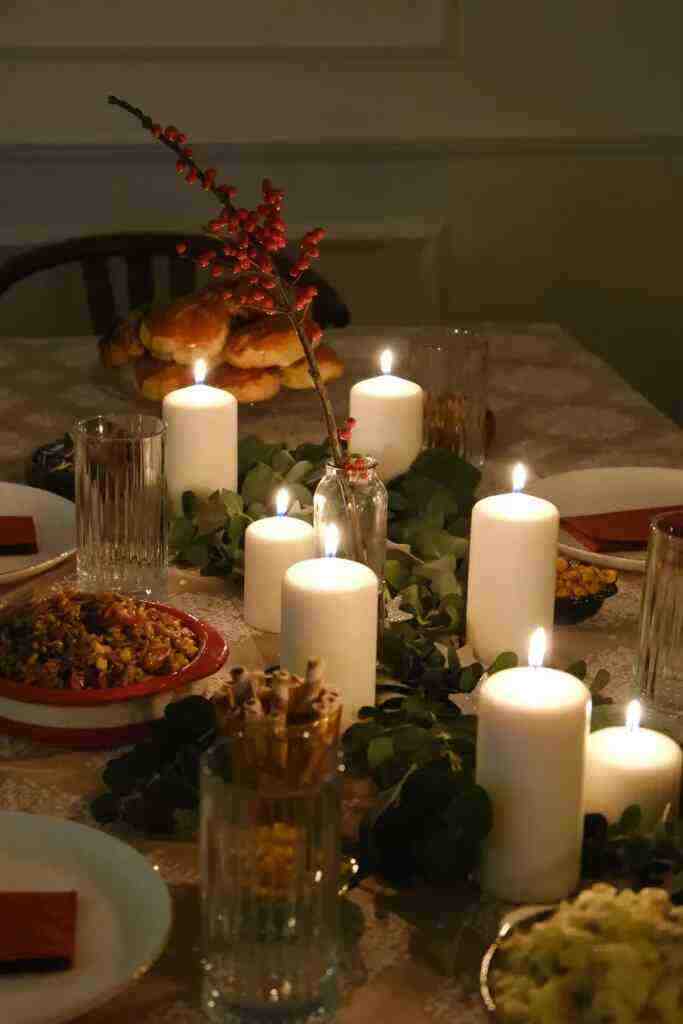Holiday Traditions Around the World: Unveiling Winter Celebrations Across Cultures
A Journey Through Global Winter Festivities
As winter’s icy embrace descends upon the globe, cultures worldwide don their festive attire, embracing unique traditions that paint the season with vibrant colors, joyous melodies, and heartfelt connections. Embark on a journey with us as we explore how different cultures celebrate winter, uncovering the stories, rituals, and symbols that make this time of year truly magical.
1. Christmas: A Season of Joy, Lights, and Gift-Giving
“When the snow falls and the yule log burns, Christmas magic fills the air.”
a) European Traditions: A Tapestry of Festive Customs
Across Europe, Christmas traditions intertwine, creating a kaleidoscope of customs. In Germany, the enchanting Christmas markets, adorned with twinkling lights and the scent of mulled wine, beckon visitors with their festive charm. In France, the beloved tradition of “Reveillon,” a lavish Christmas Eve feast, brings families together in celebration. In England, the tradition of hanging mistletoe promises a kiss beneath its enchanting boughs.
b) North American Traditions: A Blend of Cultures and Celebrations
In North America, Christmas traditions reflect a melting pot of cultures. The iconic Christmas tree, adorned with shimmering ornaments and twinkling lights, anchors many homes, while the exchange of gifts symbolizes love and gratitude. The jolly figure of Santa Claus, with his rosy cheeks and twinkling eyes, delivers presents to children on Christmas Eve, leaving behind a trail of excitement and wonder.
2. Hanukkah: A Festival of Lights and Resilience
“As the menorah’s candles flicker and dance, Hanukkah’s message of resilience shines through.”
a) The Story of Hanukkah: A Triumph of Faith
Hanukkah, also known as the Festival of Lights, commemorates the victory of the Maccabees over the Seleucid Empire in the 2nd century BCE. This eight-day Jewish holiday is celebrated by lighting a menorah, a special candelabra with nine branches, one for each night of Hanukkah. Each night, an additional candle is lit, symbolizing the triumph of light over darkness and the resilience of the Jewish people.
b) Hanukkah Traditions: A Time for Family, Food, and Festivities
During Hanukkah, families gather to enjoy traditional foods such as latkes (potato pancakes) and sufganiyot (jelly doughnuts), while children play dreidel, a four-sided spinning top, and exchange gifts. The holiday is also marked by special prayers and songs, celebrating the enduring spirit of the Jewish people.
3. Kwanzaa: A Celebration of African Heritage and Unity
“As the kinara’s candles glow, Kwanzaa’s message of unity and heritage fills the air.”
a) The History of Kwanzaa: A Call for Cultural Awareness
Kwanzaa is a week-long African American holiday that celebrates African heritage and culture. It was created in 1966 by Maulana Karenga, an African American scholar and activist, as a way to connect African Americans to their cultural roots and promote unity within the community.
b) Kwanzaa Traditions: A Journey Through African Values
During Kwanzaa, families gather to light a kinara, a special candelabra with seven candles, one for each day of the holiday. Each candle represents a different principle, such as unity, self-determination, and collective work and responsibility. Families also exchange gifts, enjoy traditional African foods, and participate in cultural activities such as storytelling and dancing.
4. Winter Solstice: A Celebration of the Sun’s Rebirth
“As the shortest day gives way to longer ones, the Winter Solstice heralds the sun’s rebirth.”
a) The Significance of the Winter Solstice: A Time of Renewal and Reflection
The Winter Solstice, occurring around December 21 or 22, marks the shortest day and the longest night of the year in the Northern Hemisphere. This astronomical event has been celebrated by cultures worldwide for centuries, symbolizing the sun’s rebirth and the return of light after the dark days of winter.
b) Winter Solstice Traditions: Rituals and Festivities Honoring the Sun
Winter Solstice celebrations vary across cultures. In many ancient cultures, it was a time for feasting, bonfires, and rituals to honor the sun and ensure its return. Today, many cultures still celebrate the Winter Solstice with festivals, gatherings, and special foods that symbolize the sun’s renewed strength.
Conclusion: A Tapestry of Traditions, a Symphony of Cultures
As we conclude our journey through global winter celebrations, we are left with a profound appreciation for the diversity and richness of human traditions. Each culture’s unique way of marking the winter season reflects its history, values, and beliefs, weaving together a tapestry of traditions that span the globe.
Whether it’s the twinkling lights of a Christmas tree, the flickering candles of a menorah, the kinara’s glowing flames during Kwanzaa, or the bonfires honoring the Winter Solstice, these celebrations remind us of the universal human need for connection, joy, and the celebration of life’s cycles. As we embrace the magic of winter, let us appreciate the beauty of cultural diversity and the shared human spirit that unites us all.
